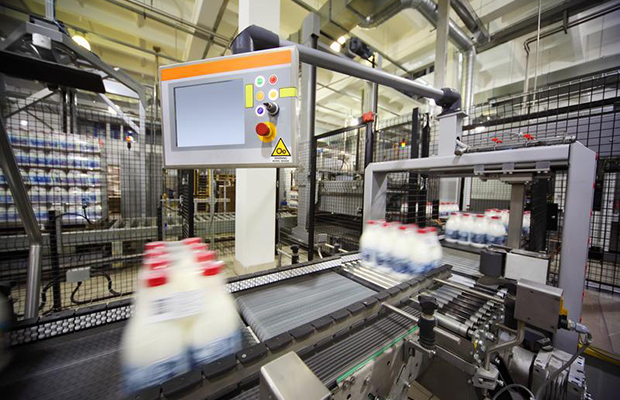

Six Tips for Reducing Energy Consumption in Food Manufacturing
By Grainger Editorial Staff 1/1/17


Energy consumption in the food and beverage industry is notoriously high. In the European Union, for instance, it accounts for a little over 10 percent of industrial energy consumption. But this money drain doesn't need to continue. Although overall energy consumption in the industrial sector is high, incremental changes can result in huge savings.
Government programs can spur savings. For example, in California, a new $57 million grant program launched by the California Energy Commission will help food processing firms lower their energy use by offering funds to companies who want to upgrade to energy-saving equipment (as long as they can prove that the equipment will lower GHG emissions).
No matter where you're located, though, here are six initiatives you can take to reduce energy consumption:
- Automate, monitor and control. The food and beverage industry can use existing automating, monitoring and controlling processes to conserve energy, such as:
- Setting specific energy goals. This step alone will lead to a reduction in energy consumption in different areas of the business
- Using new technology to monitor kilowatt consumption, optimize equipment utilization and build a robust control process to synchronize the system with plant operations
- Using energy dashboards in the automation system to receive alerts about energy consumption so operators and facility managers can make quick decisions
- Improve efficiency of refrigeration and temperature-controlled systems. Refrigeration and chilling can account for between 30 and 80 percent of your energy use. Specific ways to improve efficiencies in this area include:
- Using more efficient heat exchangers
- Using the most suitable refrigerant system with the highest efficiency rating
- Implementing a robust maintenance system to include leak detection, cleaning and optimal thermal set points
- Consider using variable speed drives (VSD) and motors. The use of variable speed drives for electrically-powered equipment may reduce operating costs by up to 50 percent. In fact, the installation of VSDs on machinery with motors, such as compressors, pumps and fans, can drastically lower energy consumption. Evaporative fans for cold storage, for example, are often large to ensure maximum cooling, but then are kept running at the same speed even after achieving optimum temperatures.
- Use alternative energy systems and sources where possible. The use of low power factor equipment and other devices that provide sustainable power to plant operations can result in huge savings. Think fuel cell technologies, solar panels and wind power. Such technologies, used in collaboration with the existing grid supply, offer hybrid power that reduces energy consumption and saves operating costs.
- Employ energy-efficient lighting systems. Light emitting diode (LED) systems have advanced rapidly in the last decade, and can be a game-changer for the food and beverage industry's quest to reduce energy consumption. LED lighting consumes less, requires less maintenance and is cooler and brighter. What’s more, it offers a higher ROI than traditional halogen or incandescent lighting. Such systems are becoming more attractive in cost while increasing efficiency.
- Implement a culture of energy efficiency. Ingraining a culture of conservancy among employees and stakeholders is perhaps one of the most important steps any food and beverage company can take to reduce their overall carbon footprint and achieve aggressive energy-conservation goals. Conduct training sessions to discuss best energy practices and educate operators about how to make better decisions. Educate all stakeholders about the importance of energy conservation and provide specific steps about how they can integrate these best practices into their daily routines.
For food and beverage manufacturers, energy conservation begins with a creating an energy efficient culture—where leadership and personnel think about energy conservation in all that they do. Intent, action and attention will undoubtedly lead to a favorable reduction in energy consumption for global food and beverage manufacturers.
Learn more about your energy saving options with Grainger Energy Services.
![]()
The information contained in this article is intended for general information purposes only and is based on information available as of the initial date of publication. No representation is made that the information or references are complete or remain current. This article is not a substitute for review of current applicable government regulations, industry standards, or other standards specific to your business and/or activities and should not be construed as legal advice or opinion. Readers with specific questions should refer to the applicable standards or consult with an attorney.






